By John Treadwell Dunbar ——Bio and Archives--November 14, 2011
Travel | CFP Comments | Reader Friendly | Subscribe | Email Us
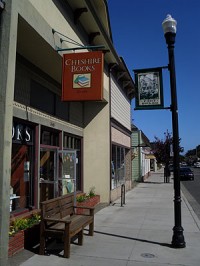 For years Hollywood has been enamored with Fort Bragg and the northern reaches of the quintessentially craggy Mendocino Coast. It's a great place to film. Parts of "One Flew Over the Cuckoo's Nest" (1975) with Jack Nicholson was filmed here, as was "Overboard" (1987) starring Goldie Hawn and Kurt Russell, and "The Majestic" (2001) with Jim Carrey. The 1966 hit "The Russians are Coming, The Russians are Coming," which seemed a lot funnier back then, was also filmed at Fort Bragg, Noyo Harbor, and quaint and beautiful Mendocino a few miles down the road.
Relative isolation helped protect this beautiful stretch of real estate from California's 40 million residents who would overrun this pristine old logging and fishing town three to four hours north of San Francisco if you gave them half a chance. It's not distance alone that shields the restored Victorian homes, gorgeous harbor and phenomenal sand beaches from the outside world, but coastal mountains as well, and maddening corkscrew roads that twist and turn and bend sharply through steep forested terrain once dense with towering redwoods now toppled and long gone for the most part.
For years Hollywood has been enamored with Fort Bragg and the northern reaches of the quintessentially craggy Mendocino Coast. It's a great place to film. Parts of "One Flew Over the Cuckoo's Nest" (1975) with Jack Nicholson was filmed here, as was "Overboard" (1987) starring Goldie Hawn and Kurt Russell, and "The Majestic" (2001) with Jim Carrey. The 1966 hit "The Russians are Coming, The Russians are Coming," which seemed a lot funnier back then, was also filmed at Fort Bragg, Noyo Harbor, and quaint and beautiful Mendocino a few miles down the road.
Relative isolation helped protect this beautiful stretch of real estate from California's 40 million residents who would overrun this pristine old logging and fishing town three to four hours north of San Francisco if you gave them half a chance. It's not distance alone that shields the restored Victorian homes, gorgeous harbor and phenomenal sand beaches from the outside world, but coastal mountains as well, and maddening corkscrew roads that twist and turn and bend sharply through steep forested terrain once dense with towering redwoods now toppled and long gone for the most part.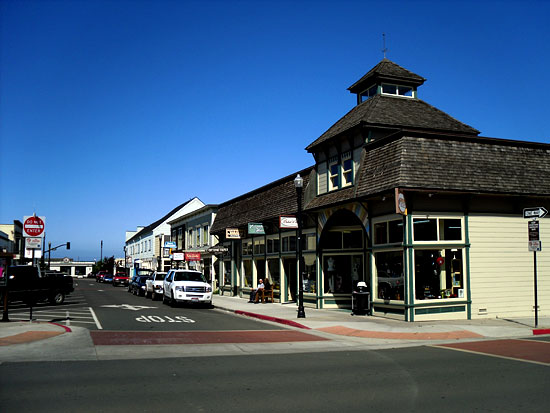 Steamships hauling redwood products south returned ballasted with bricks used to rebuild the town. And by 1912 the railroad reached Willits forty miles inland allowing tourists convenient access finally to one of the most beautiful places in California. Not only tourists, but settlers of all kinds discovered the obvious, evident to this day - Fort Bragg is special and a great place to live and raise a family, if you can find work and don't mind basking in a manageable 40 inches of liquid sunshine a year. Oh, about those California prices and taxes, ... I don't want to spoil your surprise.
Steamships hauling redwood products south returned ballasted with bricks used to rebuild the town. And by 1912 the railroad reached Willits forty miles inland allowing tourists convenient access finally to one of the most beautiful places in California. Not only tourists, but settlers of all kinds discovered the obvious, evident to this day - Fort Bragg is special and a great place to live and raise a family, if you can find work and don't mind basking in a manageable 40 inches of liquid sunshine a year. Oh, about those California prices and taxes, ... I don't want to spoil your surprise.
 Skunks and Trains and other Attractions: Today tourists arrive wide-eyed as one would expect, but not unruly hordes. Unlike Highway 101 on the northern Oregon Coast clogged with logging trucks, hybrids and recreational vehicles in frightening scads, driving California's Highway 1 on the Mendocino Coast is generally a civilized, albeit twisty, RV-free affair if you can keep up with those impatient California drivers who always seem to be in such a hurry.
Skunks and Trains and other Attractions: Today tourists arrive wide-eyed as one would expect, but not unruly hordes. Unlike Highway 101 on the northern Oregon Coast clogged with logging trucks, hybrids and recreational vehicles in frightening scads, driving California's Highway 1 on the Mendocino Coast is generally a civilized, albeit twisty, RV-free affair if you can keep up with those impatient California drivers who always seem to be in such a hurry.
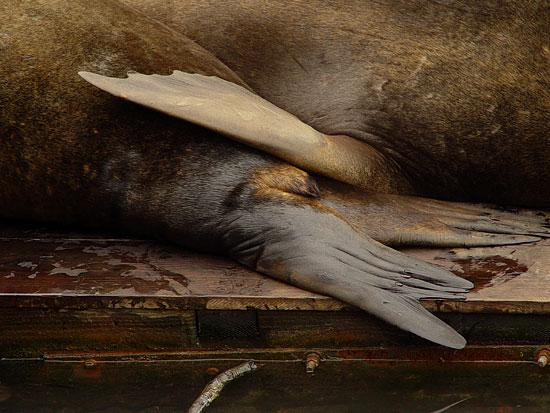 The fortunate who find their way here are drawn not only by splendid ocean scenery, the arts and fine dining, but also by the famous Skunk Train that continues to roll back and forth through the mountains and through some lucky redwood groves still standing. You can take the train all the way to Willits forty rugged miles east if you've got the time and money. Billed as one of the most scenic train rides anywhere, half-day, full-day, overnight and round-trip excursions will take you back in time through two dark tunnels and over 30 trestles and bridges that span the winding Noyo River. As for the name, rumored tradition has it that one could smell the smelly old trains before they came into view; hence, the Skunk Train.
The fortunate who find their way here are drawn not only by splendid ocean scenery, the arts and fine dining, but also by the famous Skunk Train that continues to roll back and forth through the mountains and through some lucky redwood groves still standing. You can take the train all the way to Willits forty rugged miles east if you've got the time and money. Billed as one of the most scenic train rides anywhere, half-day, full-day, overnight and round-trip excursions will take you back in time through two dark tunnels and over 30 trestles and bridges that span the winding Noyo River. As for the name, rumored tradition has it that one could smell the smelly old trains before they came into view; hence, the Skunk Train.
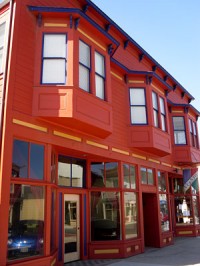 Another popular attraction is the Mendocino Coast Botanical Gardens, just south of the city sprawling across 47 manicured acres of fern canyons, rippling streams, leafy forests, ocean-view bluffs and oceanfront gardens. With pretty flowers, pine trees, and lots of green stuff growing low to the ground, it is considered one of the area's true coastal gems, a rare jewel, especially on those memorable days when you spot migrating whales offshore pushing north or south as the seasons dictate.
There was a time in this country's history when Americans took great pride in being inconsiderate slobs, and lazy ones at that. Throwing trash out the car window or discharging raw toxic sewage into pristine lakes and streams was considered a time-honored inalienable right and defined the very essence of freedom. Fort Bragg was no different. For years the locals dumped their garbage over the bluff onto their beautiful beach near the edge of town. Called "The Dumps" back then, that old dump is now referred to as "Glass Beach" and is marketed as a must-see tourist attraction.
Another popular attraction is the Mendocino Coast Botanical Gardens, just south of the city sprawling across 47 manicured acres of fern canyons, rippling streams, leafy forests, ocean-view bluffs and oceanfront gardens. With pretty flowers, pine trees, and lots of green stuff growing low to the ground, it is considered one of the area's true coastal gems, a rare jewel, especially on those memorable days when you spot migrating whales offshore pushing north or south as the seasons dictate.
There was a time in this country's history when Americans took great pride in being inconsiderate slobs, and lazy ones at that. Throwing trash out the car window or discharging raw toxic sewage into pristine lakes and streams was considered a time-honored inalienable right and defined the very essence of freedom. Fort Bragg was no different. For years the locals dumped their garbage over the bluff onto their beautiful beach near the edge of town. Called "The Dumps" back then, that old dump is now referred to as "Glass Beach" and is marketed as a must-see tourist attraction.
 Rusty appliances and old cars and, you know, junky dump stuff, it all went over the edge, including hundreds of thousands of glass containers, broken bottles and such. By the mid-1960s saner heads prevailed and the dumps were closed. They tried to clean up the mess and let nature do the rest as waves and weather pummeled those shards of colorful glass into bits and pieces, and rounded them out and gave today's tourists something odd and archeological to stumble through; a beach full of pretty multi-hued glass grinding its way back into the primal stuff of the universe, wave by crashing wave. Piece of advice: don't run around barefoot.
Rusty appliances and old cars and, you know, junky dump stuff, it all went over the edge, including hundreds of thousands of glass containers, broken bottles and such. By the mid-1960s saner heads prevailed and the dumps were closed. They tried to clean up the mess and let nature do the rest as waves and weather pummeled those shards of colorful glass into bits and pieces, and rounded them out and gave today's tourists something odd and archeological to stumble through; a beach full of pretty multi-hued glass grinding its way back into the primal stuff of the universe, wave by crashing wave. Piece of advice: don't run around barefoot.
 If the economy ever picks back up, I see good times ahead for Fort Bragg (pop. 7,000) which is in the process of gentrification, going upscale and gradually shaking off its lumbered past. Shame on me for another cliché, but Fort Bragg is being discovered, or better yet, re-discovered. During the last seven years on multiple return visits we've noticed changes which have been obvious and executed with taste and style. Victorian-era homes are getting the Victorian facelift, bistros and specialty shops are taking root beside independent bookstores, art galleries and upscale dining establishments. Off with the overalls and on with the fine linen and spandex. And that's just fine by me.
If the economy ever picks back up, I see good times ahead for Fort Bragg (pop. 7,000) which is in the process of gentrification, going upscale and gradually shaking off its lumbered past. Shame on me for another cliché, but Fort Bragg is being discovered, or better yet, re-discovered. During the last seven years on multiple return visits we've noticed changes which have been obvious and executed with taste and style. Victorian-era homes are getting the Victorian facelift, bistros and specialty shops are taking root beside independent bookstores, art galleries and upscale dining establishments. Off with the overalls and on with the fine linen and spandex. And that's just fine by me.
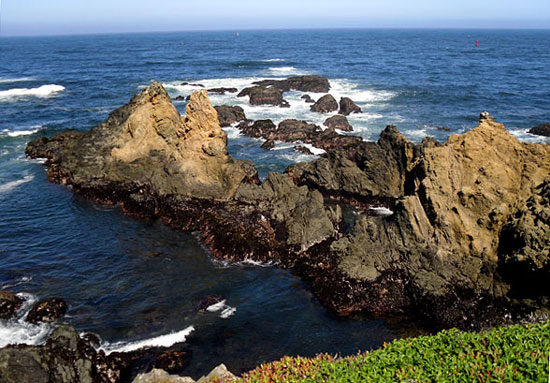 The times have definitely changed since 2002 when the big mill in town owned by Georgia Pacific shut down with considerable economic pain to the local economy, having finally eaten the hand that fed it for over a century. Large industrial logging and milling apparently is a thing of the past replaced now in part by an emerging tourist market and hopefully, some day, a tasteful development boom that honors the region's scenic attributes, environment and lifestyles. Let's hope it doesn't get carried away, doesn't get sloppy, if you know what I mean.
The times have definitely changed since 2002 when the big mill in town owned by Georgia Pacific shut down with considerable economic pain to the local economy, having finally eaten the hand that fed it for over a century. Large industrial logging and milling apparently is a thing of the past replaced now in part by an emerging tourist market and hopefully, some day, a tasteful development boom that honors the region's scenic attributes, environment and lifestyles. Let's hope it doesn't get carried away, doesn't get sloppy, if you know what I mean.
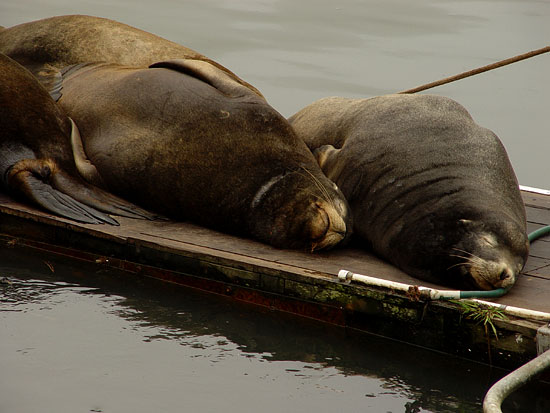 One very bright light on the horizon is Georgia Pacific's 400-acre tract that sits between town and the stunningly beautiful coastline. Up until now this most scenic part of Fort Bragg has been off limits to the little people. With the dirty old mill's passing and ownership changing hands, it appears the public and city have at long last triumphed and will acquire large segments of the property, including a three-mile stretch along the high bluffs overlooking the pounding waves and craggy shoreline from which you can see north all the way to the Lost Coast, on a clear day.
One very bright light on the horizon is Georgia Pacific's 400-acre tract that sits between town and the stunningly beautiful coastline. Up until now this most scenic part of Fort Bragg has been off limits to the little people. With the dirty old mill's passing and ownership changing hands, it appears the public and city have at long last triumphed and will acquire large segments of the property, including a three-mile stretch along the high bluffs overlooking the pounding waves and craggy shoreline from which you can see north all the way to the Lost Coast, on a clear day.
 This is a big deal, and if things pan out as anticipated some of the property will be developed as residential homes, parks and trails should flourish, some areas would serve commerce and light industry, and there might even be a marine education complex and an industrial arts center, among other things. Conscientious development of the G-P mill lands could lift this beautiful town and carry it through another century with tasteful dignity. Or, they can play it stupid and go back to their old ways and dump their trash over the edge and eat the other hand that could feed them for years to come, metaphorically speaking. This is a golden opportunity, Fort Bragg. Don't blow it.
This is a big deal, and if things pan out as anticipated some of the property will be developed as residential homes, parks and trails should flourish, some areas would serve commerce and light industry, and there might even be a marine education complex and an industrial arts center, among other things. Conscientious development of the G-P mill lands could lift this beautiful town and carry it through another century with tasteful dignity. Or, they can play it stupid and go back to their old ways and dump their trash over the edge and eat the other hand that could feed them for years to come, metaphorically speaking. This is a golden opportunity, Fort Bragg. Don't blow it.
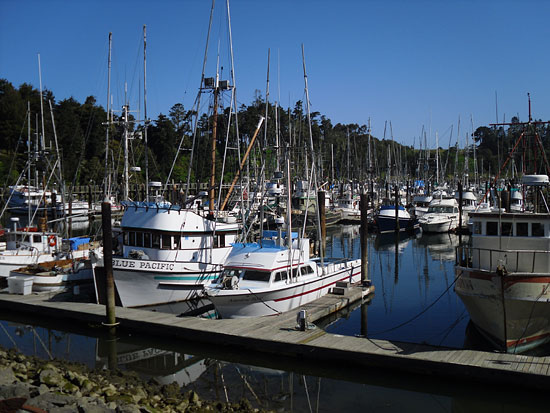 With a deep sigh and choice words I rolled the windows back up, wiped the damp off my worn and weathered mug, fired up the engine, clicked the lights back on, and turning the beast around in the narrow road, headed back up that winding, twisting, turning slow-going strip of asphalt dreaming of hot coffee or deep sleep. "Where to?" I asked, as we crept along at 15-miles-an-hour watching light beams sweep across the trunks of trees and velvet curtains of white fog, floating.
With a deep sigh and choice words I rolled the windows back up, wiped the damp off my worn and weathered mug, fired up the engine, clicked the lights back on, and turning the beast around in the narrow road, headed back up that winding, twisting, turning slow-going strip of asphalt dreaming of hot coffee or deep sleep. "Where to?" I asked, as we crept along at 15-miles-an-hour watching light beams sweep across the trunks of trees and velvet curtains of white fog, floating.
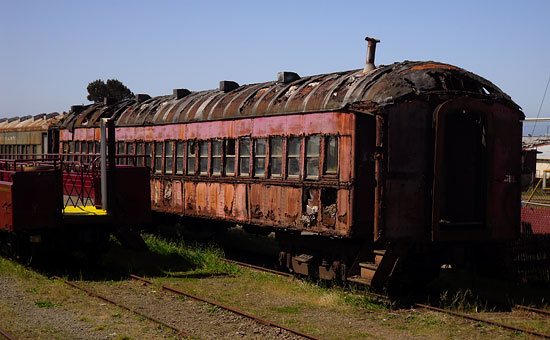
View Comments
John Treadwell Dunbar is a freelance writer